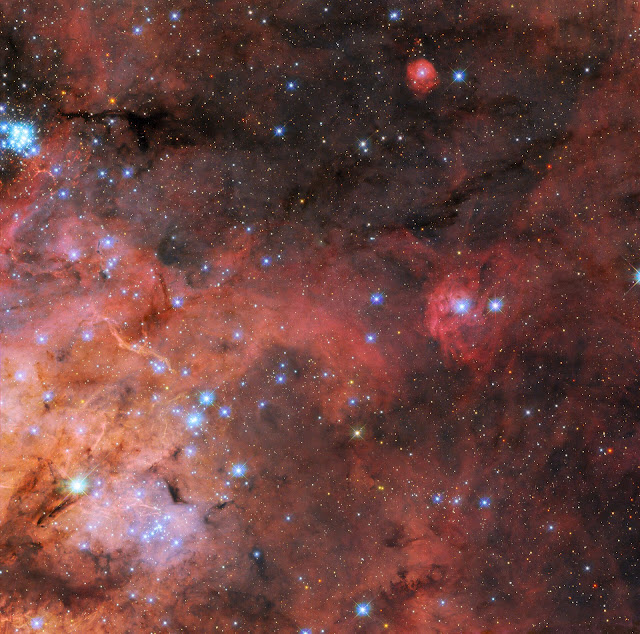GENERATE YOUR WILDSPACE SYSTEM NOW!

NASA/ESA - Tarantula Nebula - Hubble Space Telescope
Who doesn't love tables?
...
Yeah, I agree.
Here I present to you my fanmade tables to generate your Wildspace system for D&D 5e Spelljammer. Or any other game which includes space travel and/or planetary systems (Mothership? Death in Space? Starfinder? Lancer? Call of Cthulhu?!? Many more I do not know?). Be my guest. After the OGL situation people should've got more familiarity with other games.
My tables are quick and dirty, so remember that you can (and almost surely, will) tweak your results to better suit your needs.
GENERAL SYSTEM FEATURES
Central Body (1d10)
1-6) Sun
7) Planet
8) Black hole
9) Remains of a supernova
10) Void
Number of planets: roll a d10+2
System’s features (roll twice if number of planets is equal or below 6, thrice equal or above 7) (1d3)
1) asteroid field 2) nebula 3) comet
WILDSPACE BODIES GENERAL DESCRIPTION
Type of Sun (1d12)
1) Red
2-3) Orange
4-6) Yellow
7-8) Yellow-white
9) White
10) White-blue
11) Blue
12) Double stars. Roll again twice, ignoring results of 12
Type of Planet (1d6)
1-3) Earth planet
4) Water planet
5) Air planet (20% chance of being on fire, roll on type of sun for color)
6) unusual planet (living, crystalline, gelatinous, etc.)
Planet shape (1d8)
1-4) spherical
5) flat disc
6) polyhedron
7) irregular
8) amorphous
Size (earth and water planets) (1d6)
1) tiny (asteroids or dwarf planets)
2) small (dwarf planets)
3-5) medium
6) large
Size (suns and air planets) (1d6)
1) medium
2-3) large
4-5) huge
6) gargantuan
Size (unusual planets) (1d6)
1) tiny
2) small
3) medium
4) large
5) huge
6) gargantuan
Planetary distance (in spelljamming days) between the central body and the first planet: roll 1d4+2
Planetary distances (in spelljamming days) between neighboring planets:
closest: 1d4 days
average: closest x2
farthest: closest x4
Random position of two planets (1d4)
1) Closest
2-3) Average
4) Farthest
PLANETARY FEATURES
Planet’s orbit features (you choose how many time to roll on this table) (1d4)
1d4 moons
ring (made of small rocks and/or ice blocks)
asteroid cluster
offworld settlement (like the Rock of Bral, etc.)
Earth Planet General Display (1d6)
1) No water bodies
2-4) More land mass than water bodies
5-6) More water bodies than land mass
Life on planet? (1d10)
1)no life
2-3) only primitive life-forms (oozes, elementals, plants, dragons, etc…)
4-5) evolved flora and fauna (beasts, stone age civilizations, etc…)
6-9) various landlocked civilizations
10) extraplanetary empire
* * *
This article was originally written before January 2023 and its events in the TTRPG communities, and only recently edited and refined. As I've written before, I will continue to play 5e and therefore, continue to create for 5e. I love the game. But I have no love for WotC or Hasbro. If this situation has left something new with me, is that too many people were playing only D&D. This seems absurd to me and my friends.
You see, in Italy many players prefer indie games over giants like D&D. Sure, almost everyone of them has played it at least once in their lifetime (mainly during the 3.5 prolonged lifetime, also mainly thanks to piracy), but many of them moved on to other systems. D&D is still treated like something childish (unfairly so), so I thought that I was better off approaching the global community if I wanted to talk about this game. Hence why I write in english and follow closely the north-american TTRPG community.
I have reflected a lot about this and my conclusion is to actually talk more about other games. So expect a tiny wave (my consistency in writing is trash) of posts for other TTRPG in the future.
Comments
Post a Comment